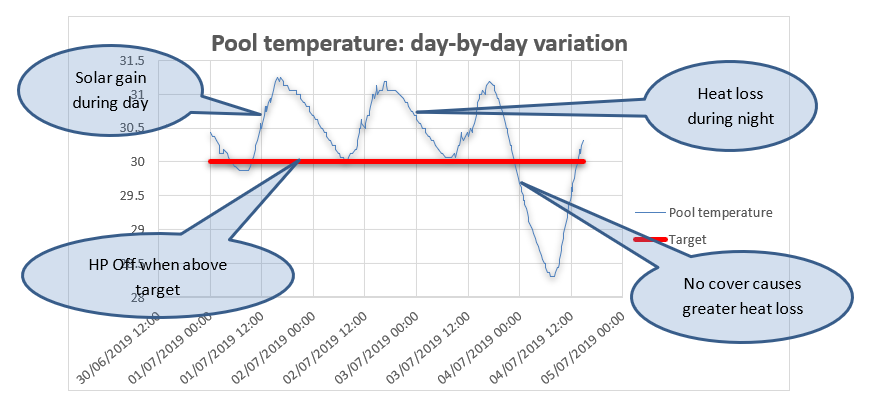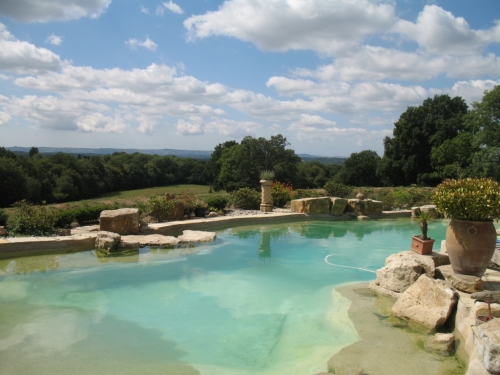Everyone will tell you, and it is supported by theory, that most of the heat lost from an outdoor pool is from evaporation, radiation, and convection from the surface. In an uncovered pool this is likely to be more than 80% of the total energy lost from the pool, nearly all of which can be saved by a good cover.
On a sunny day the pool will absorb a surprising amount of heat from sunlight. A pool in direct sun may absorb up to about 300W/m2 of surface area while the sun is out. That could well be more than your pool heater is capable of producing and will keep the pool at temperature by itself during a sunny period. This is not a surprise since many pools in southern Europe rely entirely on solar heating. We don’t do that in the UK because our climate is not reliably sunny. However the location, shade and protection from wind are all important to think about when planning the location of a new pool.
The graph below illustrates these points. It comes from data we log from a local pool. The pool is large, reasonably well insulated, in a sheltered, south facing courtyard and is heated during the day by an air source heat pump. The heat pump is held off by a thermostat when the pool is above the target temperature (30oC in this case), and is off at night so the PV system heats the pool as much as possible.
The graph shows the pool running for the first four days in July – a period this year with continuous warm, sunny weather.

For the first two days the pool rises in temperature during the day with no heat input from the heat pump, relying entirely on solar gain. During the nights, when the sun goes in, the temperature falls back by just over one degree. On the final day shown the owners left the pool uncovered overnight: you can see the dramatic additional heat loss this caused. The following day was the only time in the week when the pool heater needed to contribute anything. It was a sunny week.
If you want to save money on your pool heating and minimise its environmental impact:
- Install a good quality solar cover to minimise heat losses and maximise solar gain and remember to use it when the pool is not being used.
- Turn the temperature of the pool down. Every degree lower will save about 5% of the heat required on a typical summer day.
- If you are planning a new pool, install it in full sun and in a sheltered area. A strong wind or breeze at the surface of the pool will both make swimmers feel colder and also (and for the same reasons) the pool will lose substantially more heat.
- A heat pump will be the cheapest and most efficient way to provide whatever heat the pool still needs.







